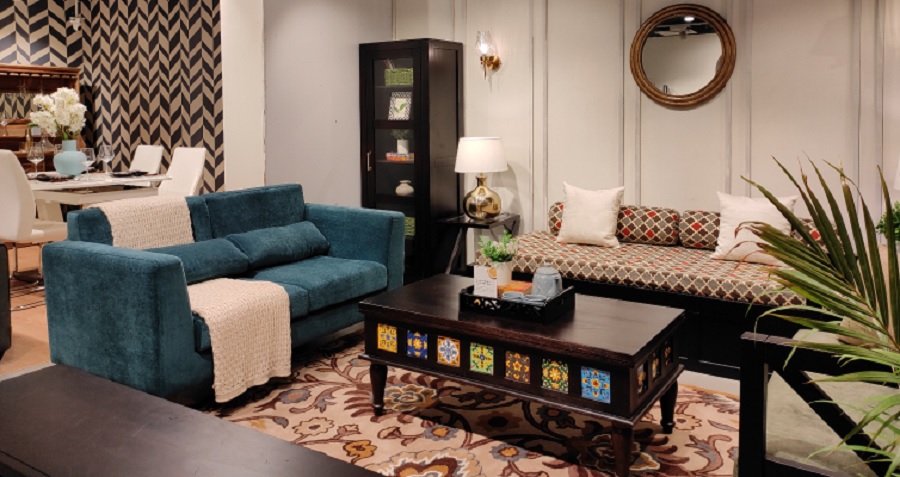Furniture is far more than a mere necessity in our homes; it is a critical component of our daily lives, shaping the way we interact with our environment. The pieces we choose for our living spaces can influence our mood, productivity, and sense of comfort. Whether it’s a plush armchair that beckons after a long day, a dining table where memories are made, or a bed that promises restful sleep, furniture has the power to transform a house into a home. The evolution of furniture, from its earliest forms to the modern designs we cherish today, reflects the ever-changing needs and tastes of human society. In this article, we will explore the multifaceted role of furniture, examining its historical roots, functional importance, aesthetic appeal, and future trends.
The Historical Journey of Furniture
The history of furniture is as old as human civilization itself. Early furniture pieces were rudimentary, built primarily for utility and durability. The Egyptians, for example, crafted wooden stools, tables, and storage chests, which were often adorned with intricate carvings and inlays. In ancient Greece and Rome, furniture began to take on more sophisticated forms, with reclining couches and luxurious banquet tables becoming common in the homes of the elite. However, much of the furniture during these times was still designed with practical considerations in mind rather than purely aesthetic ones.
As Europe moved into the Renaissance period, the relationship between functionality and style began to shift. Furniture pieces grew more elaborate, incorporating intricate carvings, luxurious materials, and ornate designs. This period saw the advent of iconic pieces such as the grand four-poster bed and the intricately designed armchairs. The Baroque and Rococo eras further refined the art of furniture-making, with an emphasis on opulence, decorative motifs, and bold, dramatic proportions.
The Industrial Revolution marked a significant turning point in furniture production. Mass production techniques made furniture more affordable, and this democratization of design allowed for greater accessibility. Simultaneously, the Arts and Crafts movement, led by figures like William Morris, emphasized handcrafted, functional furniture that celebrated natural materials and simple forms. This laid the groundwork for modern design movements, including Art Deco and mid-century modern, which would redefine furniture in the 20th century.
Functionality: The Foundation of Good Design
At its core, furniture serves one primary function: to support human activity. From seating to sleeping, eating to storage, furniture must meet the demands of everyday life. But beyond this basic functionality, furniture can enhance comfort and contribute to the overall atmosphere of a space.
Seating, for instance, is one of the most common and essential forms of furniture. The evolution of seating, from simple stools and benches to plush sofas and ergonomic office chairs, highlights how the function of comfort has become central to furniture design. Today’s sofas, often designed with a blend of style and function, offer not only comfort but also versatility. Modular sofas, for example, can be rearranged to fit different room layouts or occasions, providing flexibility in modern living spaces.
Similarly, beds, which have existed in various forms since ancient times, continue to be a cornerstone of furniture design. The modern bed, often regarded as the most important piece of furniture in the home, balances comfort with design. Whether it’s a minimalist platform bed or a lavish king-sized bed with an upholstered headboard, the bed is both a place of rest and an aesthetic focal point in the bedroom.
The dining table also exemplifies the intersection of functionality and design. This piece of furniture is central to family life, serving as the venue for meals, gatherings, and celebrations. From traditional wooden tables to sleek, glass-topped models, the dining table has undergone numerous transformations. Today, multifunctional dining tables that can double as workspaces or extend to accommodate guests reflect modern living’s adaptability.
Storage solutions, such as cabinets, bookshelves, and dressers, are another essential element of furniture. As living spaces shrink, especially in urban environments, the demand for multifunctional storage has surged. Furniture makers now design pieces that combine storage with aesthetic appeal, ensuring that clutter is hidden while maintaining a polished, sophisticated look.
Aesthetic Appeal: Furniture as Art
Beyond its utilitarian function, furniture plays a significant role in shaping the aesthetic identity of a space. The design, color, and materials of furniture contribute to the mood and tone of a room, influencing how we feel when we enter it. Furniture can be a statement of personal style, reflecting cultural influences, historical periods, and design philosophies.
Mid-century modern furniture, characterized by clean lines, functional design, and an emphasis on natural materials, continues to be highly regarded for its timeless appeal. Iconic pieces like the Eames Lounge Chair and the Noguchi Coffee Table remain symbols of minimalist elegance, showcasing how furniture can be both functional and artistic. On the other hand, the eclectic style of combining vintage and contemporary pieces allows individuals to create unique, personalized spaces that reflect their individual tastes.
The materials used in furniture design also have a profound impact on its aesthetic appeal. Wood, metal, glass, and fabric are all commonly used, but the choice of material can elevate a piece from simple utility to a work of art. Rich, dark woods like walnut and oak exude warmth and sophistication, while lighter woods such as maple and ash lend a more airy, modern vibe. Similarly, the use of metals like brass and stainless steel in contemporary furniture adds an industrial flair, while glass surfaces contribute to a sense of transparency and lightness.
Moreover, furniture is an integral part of the interior design palette. When combined with other design elements, such as color schemes, lighting, and textiles, furniture creates a harmonious whole that defines the character of a room. Whether a space is designed to be warm and cozy or sleek and modern, the furniture plays a crucial role in realizing that vision.
The Future of Furniture
As we move further into the 21st century, the future of furniture is likely to be shaped by technological advancements, sustainability concerns, and evolving lifestyles. In recent years, the integration of smart technology into furniture has begun to take hold. Smart beds, for instance, can now adjust their position and temperature, enhancing comfort and promoting better sleep. Smart sofas may feature built-in charging stations, Bluetooth speakers, and even adjustable lumbar support, making the furniture more functional than ever before.
Sustainability is another driving force in the future of furniture design. With growing concerns about climate change and the environmental impact of manufacturing, consumers are increasingly seeking furniture made from sustainable materials. Recycled wood, biodegradable plastics, and fabrics made from natural fibers are gaining popularity, as manufacturers look for ways to reduce their carbon footprint. Additionally, the rise of second-hand furniture markets and upcycling initiatives reflects a growing awareness of the importance of reducing waste and promoting a circular economy.
The future may also bring further innovations in modular and adaptable furniture. As urban living spaces become smaller and more dynamic, the demand for furniture that can transform to meet different needs will only increase. Furniture that can easily transition from a workspace to a dining area or from a sofa to a guest bed will become essential for those living in compact spaces.
Conclusion
Furniture is not merely a collection of objects designed to fulfill basic needs; it is an integral part of our lives, shaping our environment, our experiences, and our well-being. From its historical evolution to its modern-day role in both form and function, furniture reflects the values, aesthetics, and technological advancements of the societies that create it. Whether minimalist or opulent, functional or artistic, furniture continues to define how we interact with our living spaces, offering comfort, beauty, and style in equal measure. As we move forward, the future of furniture promises to be one of innovation and sustainability, ensuring that the pieces we choose to fill our homes remain as relevant and meaningful as ever.







